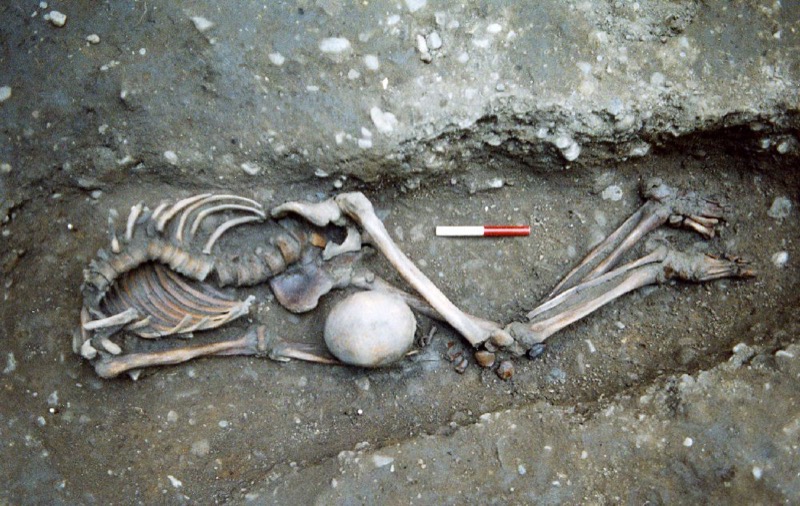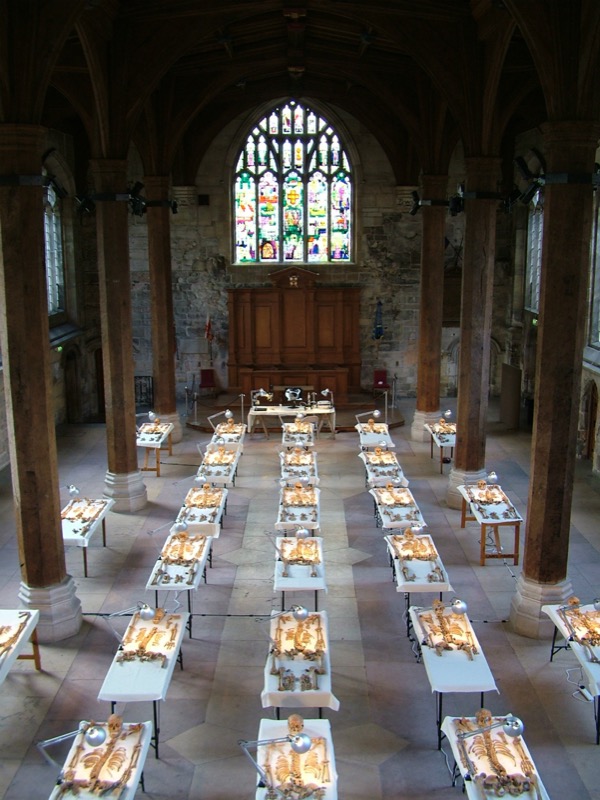Scientists Sequence Ancient British ‘Gladiator’ Genomes from Roman York
Posted on: 19 January 2016
Cutting-edge genome technology in Trinity College Dublin has cast more light on a mystery that has perplexed archaeologists for more than a decade. The origins of a set of Roman-age decapitated bodies, found by York Archaeological Trust at Driffield Terrace in the city, have been explored, revealing a Middle Eastern body alongside native British.
Archaeologists have speculated that the skeletons belonged to gladiators, although they could also have been soldiers or criminals. Several suffered perimortem decapitation and were all of a similar age – under 45 years old. Their skulls were buried with the body, although not positioned consistently – some were on the chest, some within the legs, and others at the feet.

Although examining the skeletons revealed much about the life they lived – including childhood deprivation and injuries consistent with battle trauma – it was not until genomic analysis by a team from Trinity College Dublin, led by Professor of Population Genetics, Dan Bradley, that archaeologists could start to piece together the origins of the men.
The Trinity College team recently published the first prehistoric Irish genomes and this analysis by Trinity PhD Researcher, Rui Martiniano, also breaks new ground as it represents the first genome analysis of ancient Britons.
From the skeletons of more than 80 individuals, Dr Gundula Muldner of the University of Reading, Dr Janet Montgomery of the University of Durham and Malin Holst and Anwen Caffel of York Osteoarchaeology selected seven for whole genome analyses. Despite variation in isotope levels which suggested some of the 80 individuals lived their early lives outside Britain, most of those sampled had genomes similar to an earlier Iron Age woman from Melton, East Yorkshire. The poor childhood health of these men suggests that they were locals who endured childhood stress, but their robust skeletons and healed trauma, suggest that they were used to wielding weapons.

The nearest modern descendants of the Roman British men sampled live not in Yorkshire, but in Wales. A man from a Christian Anglo-Saxon cemetery in the village of Norton, Teesside, has genes more closely aligned to modern East Anglia and Dutch individuals and highlights the impact of later migrations upon the genetic makeup of the earlier Roman British inhabitants.
However, one of the decapitated Romans had a very different story, of Middle Eastern origin he grew up in the region of modern day Palestine, Jordan or Syria before migrating to this region and meeting his death in York.
“Archaeology and osteoarchaeology can tell us a certain amount about the skeletons, but this new genomic and isotopic research can not only tell us about the body we see, but about its origins, and that is a huge step forward in understanding populations, migration patterns and how people moved around the ancient world,” says Christine McDonnell, Head of Curatorial and Archive Services for York Archaeological Trust.
“This hugely exciting, pioneering work will become the new standard for understanding the origins of skeletons in the future, and as the field grows, and costs of undertaking this kind of investigation fall, we may be able to refine our knowledge of exactly where the bodies were born to a much smaller region. That is a remarkable advance.”
As well as Trinity College Dublin, the multi-disciplinary scientific analysis involved scientists from the University of York and The York Archaeological Trust, as well as the universities of Durham, Reading and Sheffield, University College London and the University Medical Centre in Utrecht. The research also included experts from York Osteoarchaeology Ltd, City of York Council and the Natural History Museum.
The Roman skeletons sampled were all male, under 45 years old and most had evidence of decapitation. They were taller than average for Roman Britain and displayed evidence of significant trauma potentially related to interpersonal violence. All but one would have had brown eyes and black or brown hair but one had distinctive blue eyes and blond hair similar to the single Anglo-Saxon individual.
The demographic profile of the York skeletons resembles the population structure in a Roman burial ground believed to be for gladiators at Ephesus. But the evidence could also fit with a military context — the Roman army had a minimum recruitment height and fallen soldiers would match the age profile of the York cemetery.
Professor Dan Bradley, Trinity, said: “Whichever the identity of the enigmatic headless Romans from York, our sample of the genomes of seven of them, when combined with isotopic evidence, indicate six to be of British origin and one to have origins in the Middle East. It confirms the cosmopolitan character of the Roman Empire even at its most northerly extent.”
PhD Researcher and lead author, Rui Martiniano, Trinity, said: “This is the first refined genomic evidence for far-reaching ancient mobility and also the first snapshot of British genomes in the early centuries AD, indicating continuity with an Iron Age sample before the migrations of the Anglo-Saxon period.”
Professor Matthew Collins, of the BioArCh research facility in the Department of Archaeology at York, who co-ordinated the report on the research, “These genomes give the first snapshot of British genomes in the early centuries AD, showing continuity with the earlier Iron Age and evidence of migrations in the Anglo-Saxon period.”
The paper ‘Genomic signals of migration and continuity in Britain before the Anglo-Saxons’ is published in Nature Communications.
